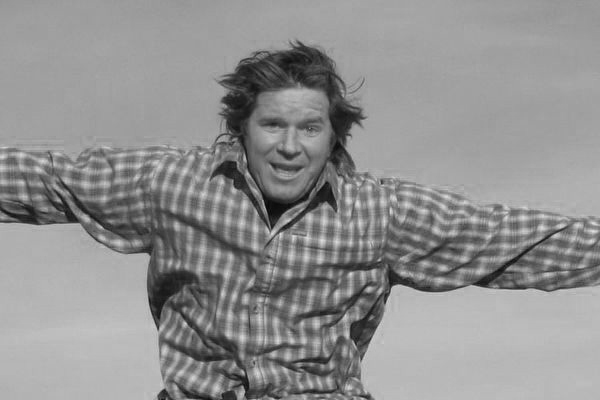
 Fred Williams
Brand Manager, Petersen’s 4Wheel & Off Road
Fred Williams
Brand Manager, Petersen’s 4Wheel & Off Road
If you’re new to four-wheeling then you’ve probably heard about changing gears and adding lockers. If you pictured shifting your transmission with locking boxes in the bed, that is not what we are talking about. Four-wheeling gears and lockers can change your truck from zero to hero as much as suspension and tires.

In our ’79 F-150, BluFerd, we recently changed from a 3.50 axle gear ratio with open diffs to 4.56s with Detroit Lockers. The changes were tremendous off-road and both good and bad on-road. Here is how we did it, what it means, and what we discovered.
Lower Gear Basics
Axle assemblies have a ring-and-pinion gearset inside that transfers driveshaft rotation into axleshaft rotation, basically making a 90-degree turn. The pinion gear on the driveshaft side has teeth that mesh and drive the ring gear on the axleshaft side. The ratio of pinion teeth to ring gear teeth is the gear ratio.
When building a 4x4 that is outfitted with larger tires we recommend going to a different gear ratio, as it will assist the engine in turning the larger, heavier tires. We often recommend going to a “lower” gear, a gear that offers more torque multiplication, similar to shifting to a lower gear in your transmission. However, by lower we actually mean a higher numerical ratio. For example, 4.56:1 is considered lower than 3.50:1. Just remember, lower gears are higher numbers. To better understand this, imagine that your engine puts a certain amount of torque into each and every driveshaft rotation, and the gear ratio multiplies that torque into each and every tire rotation. If a single driveshaft rotation is 100 lb-ft, then the lower ring gear of 4.56 now puts 456 lb-ft into turning the tire just once as compared to the higher 3.50 gear, which only saw 350 lb-ft.
Locker Basics
At the same time as the gear change we often recommend making the change from open differentials to locking differentials or lockers of some sort. The axle differential carrier allows for the inner and outer tires to turn at different speed (thus the name differential) while going around a corner. They each follow a different arc/track. That differential is usually what we refer to as “open,” meaning it will send power to the wheel with the least traction. Because of this, most 4x4s have only two wheels actually driving while off-road, and if one front and one rear wheel have no traction simultaneously the truck stops moving forward. This is why we recommend lockers, which connect both axleshafts together to provide better forward progress.
Lockers come in many styles: automatic lockers, selectable lockers, and spools. All have a simple job, to send the power equally to both wheels at the end of the axleshafts. Two terms that may confuse you are center diff lock and locking hubs. These are parts of the transfer case and front axle hubs, respectively—neither are “lockers” and neither are important for this story. Our most recommended types of lockers are automatic lockers and selectable lockers. Limited slips are not lockers as they are “limited” in their power dispersion to each wheel, while spools have zero differentiation between tires, making the vehicle difficult to turn because the tires cannot rotate at different speeds.
Mileage & Costs
Changing gears and lockers isn’t a cheap upgrade. Two Detroit Lockers will set you back about $1,150; two Superior Axle gearsets and install kits for these axles will run another $500. Plus, there is the labor of installation. Doing it yourself isn’t impossible but will require special tools, adding even more costs.

We also found other issues when tearing into our axles. Both rear brakes were in need of replacement. Our rear pinion yoke was worn out. Front and rear axle seals needed replacing. The front hub bearings needed to be repacked or replaced. To put it simply, doing gears and lockers on an old truck requires a flexible budget, as you may have to get more new parts than planned when you open this can of worms.
The fuel economy improved and worsened with the gear and locker swap, but mostly due to the lower gears. Before the swap we did a long highway drive where the 3.50 gears were netting 11.4 mpg, and then a section of steep mountain climbs, city stop-and-go traffic, and off-road testing where the mileage dropped to 7.4 mpg. After the gear swap our highway mileage dropped considerably to 9.2 mpg since the engine was spinning much faster to maintain highway speeds. However, the mountain, city traffic, and off-roading sections all netted 11.5 mpg because the engine had to work less to get the truck moving and propel it up the steep climbs. Averaged out, the gear change actually would save us fuel, but if long highway drives are your commute then the higher 3.50 or possibly 4.10 gears are a better option for you—and just the opposite if stop-and-go traffic makes up your daily routine.
The Detroit Locker has an unearned reputation for being odd-handling on the street. In fact this is normally due to uneven tire pressures, which cause the internal clutches to lock and unlock aggressively while street driving. This is often amplified by a short wheelbase and manual transmission. Maintaining equal tire pressures and weight loading side to side on-road can greatly reduce the Detroit’s infamous personality.
PhotosView Slideshow




